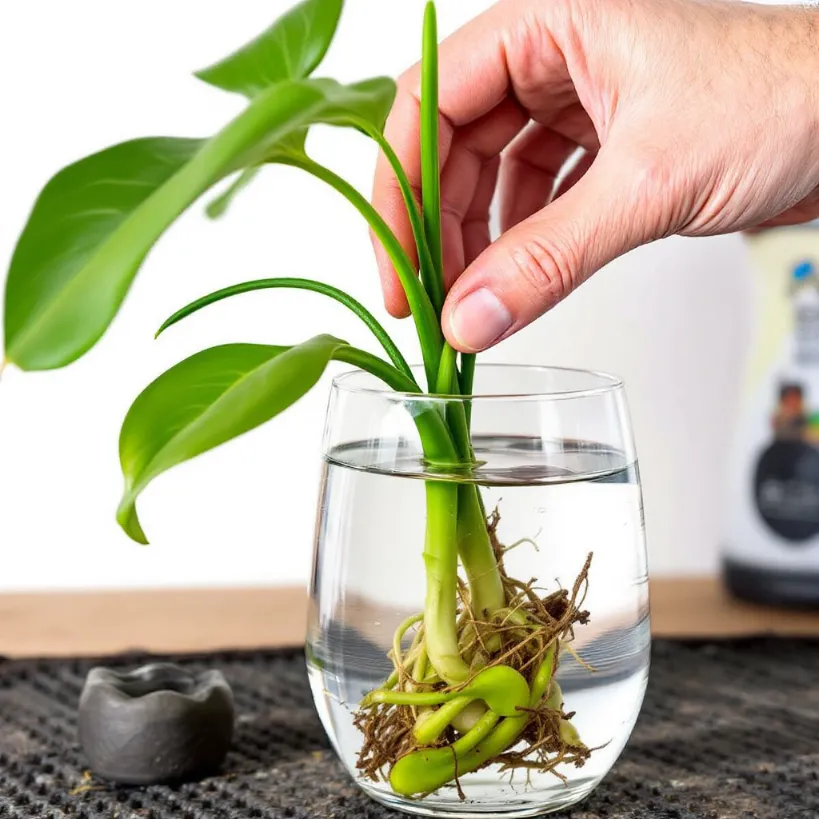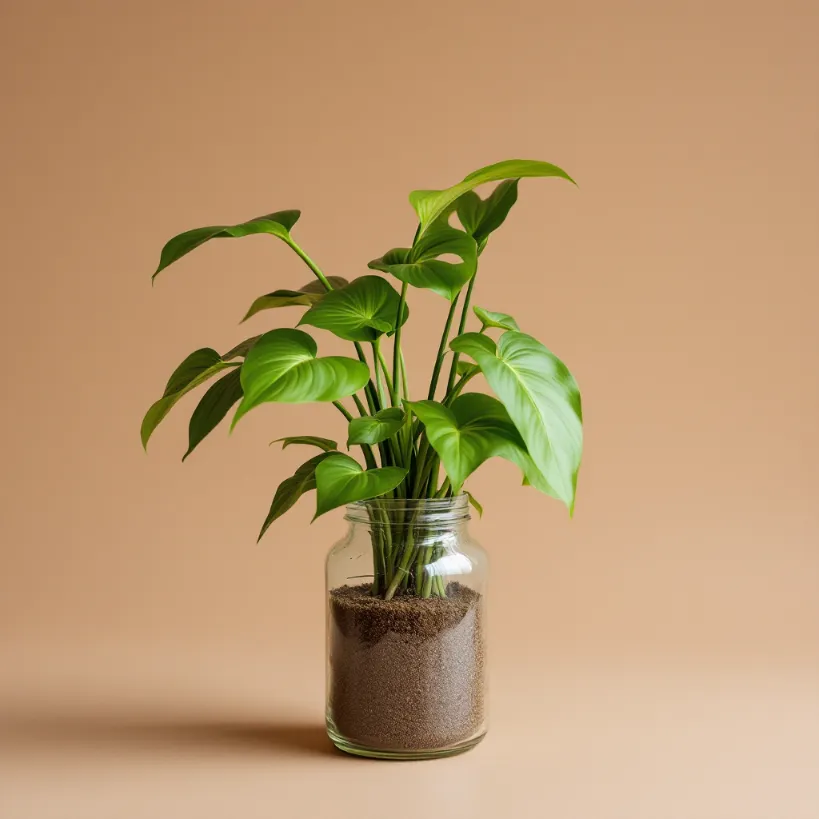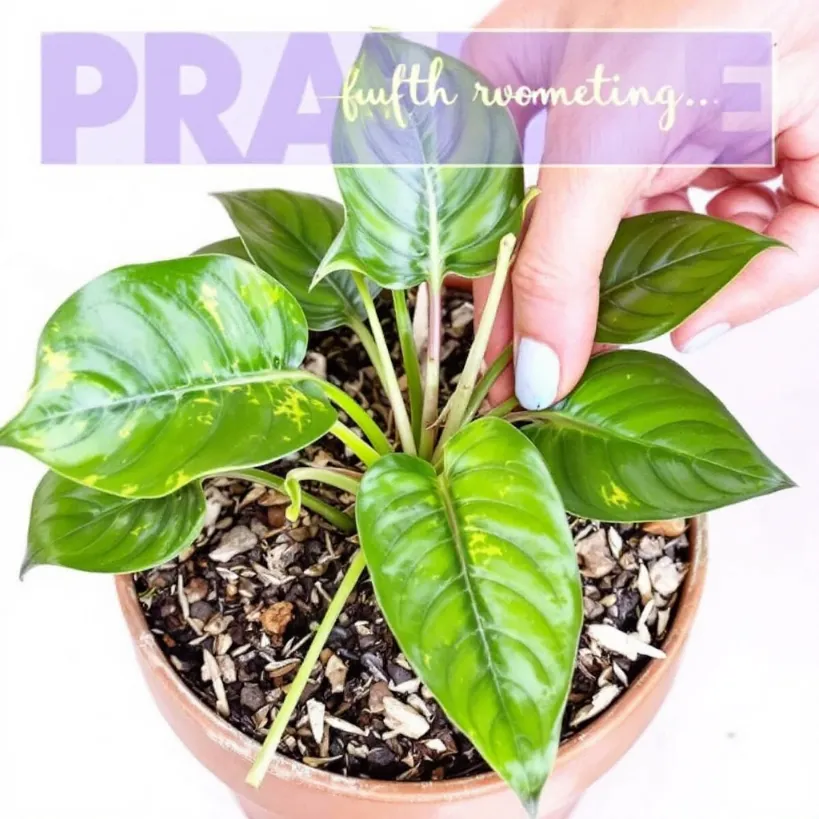Philodendrons multiply faster than rabbits once you learn the tricks. These tropical winners don’t need much coaxing to make babies. You stick a cutting in water, and boom – roots appear like magic. No wonder plant people get hooked on propagation.I’ve seen folks with jars lined up on windowsills, each holding a hopeful green cutting. It’s not rocket science, but there are ways to boost your success.
Philodendrons forgive mistakes, but why stumble when you can dance through the process?Water, soil, air layering – each method has its sweet spot. Some philodendron varieties practically beg to be divided while others prefer the water treatment. The right approach depends on what’s growing in your pot.
Key Takeaways
- Stem cuttings work best – make the cut below a node with at least one leaf attached
- Water propagation shows visible progress – seeing roots develop provides immediate feedback
- Soil propagation skips the transplant shock – cuttings go directly to their final medium
- Air layering works for larger plants – perfect for leggy specimens that need rejuvenation
- Division maintains mature plants – instantly creates established specimens from one parent plant
- Spring and summer bring best results – active growth periods boost propagation success rates
The Stem Cutting Method: Quick and Dirty
Stem cuttings make propagating philodendrons almost foolproof. These plants want to grow, no fancy techniques needed.
What You Need
- Sharp, clean scissors or pruning shears
- A healthy philodendron plant
- Growing medium (water or soil)
- Optional: rooting hormone
How To Do It Right
First, identify the node – that little bump on the stem where leaves attach. This spot has special cells ready to transform into roots. Make your cut about a quarter-inch below a node.

Each cutting should have at least one leaf and one node. For best results, snip in the morning when plants are hydrated after their night rest.”I’ve propagated dozens of philodendrons, and the key is always a clean cut below a node,” says Maria Johnson, plant propagation specialist. “Skip this step, and you’re just putting dead stems in water.”Some collectors swear by rooting hormone powder, but philodendrons rarely need this boost. They’re naturally eager to root.
Water Propagation: The Window to Root Growth
Water propagation wins the popularity contest for good reason. You can watch the miracle happen – thin white roots emerging, then thickening and branching day by day.Place your cutting in a clear glass container with room temperature water. Position so the node is submerged but leaves stay dry. Change the water weekly to prevent algae and bacteria.

The see-through advantage helps beginners know when roots are sufficient for soil transfer – typically when they reach 1-2 inches long. Most philodendron varieties develop water roots within 2-3 weeks.Remember that water roots differ from soil roots. When transferring to soil, keep the mix consistently moist for the first few weeks while the plant adapts its root structure to the new environment.
Soil Propagation: The Direct Approach
Skip the middle step by popping cuttings straight into soil. This method avoids the shock of transitioning from water to soil that sometimes slows growth.
The Soil Method Step by Step
- Prepare small pots with well-draining philodendron soil mix
- Dip cut end in rooting hormone (optional but helpful for soil starts)
- Make a hole in the soil with your finger or pencil
- Insert cutting, ensuring the node is buried
- Gently firm soil around stem
- Water thoroughly until excess drains from bottom
- Cover with clear plastic bag to create a mini-greenhouse (remove for a few hours daily)
The downside? You can’t see root development, so you’ll judge success by new growth appearing. This usually takes 4-6 weeks. When your cutting resists a gentle tug, roots have established.Soil propagation works especially well for finicky philodendrons like Philodendron Gloriosum that sometimes sulk during the water-to-soil transition.
Air Layering: For Leggy Plants That Need Help
Air layering sounds complicated but it’s just encouraging roots while the stem stays attached to the mother plant. This technique shines for:
- Leggy specimens that need rejuvenation
- Plants with thick, woody stems
- Rare varieties where failure isn’t an option
Air Layering Made Simple
- Identify where you want roots to form
- Use a sharp knife to make a small upward cut (about 1/3 into the stem)
- Wrap damp sphagnum moss around the wounded area
- Cover moss with plastic wrap, securing above and below with twine
- Wait for roots to appear through the moss (usually 4-8 weeks)
- Cut below the new root ball once roots are well-developed
- Pot up your new plant
This method has the highest success rate because the cutting receives nutrients from the parent until it can support itself. Perfect for rare houseplants that would break your heart (and wallet) if propagation failed.
Division: Instant Mature Plants
Division works beautifully for philodendrons that form multiple growing points. Plants like Philodendron Hope Selloum and other self-heading types practically beg to be divided.Wait until your plant has outgrown its pot and needs repotting anyway. Then:
- Remove the entire plant from its container
- Gently tease apart the root ball, identifying natural separation points
- If needed, use a clean knife to separate stubborn sections
- Ensure each division has both roots and shoots
- Pot up divisions in fresh soil
- Water thoroughly and place in indirect light

Division creates instantly mature plants – no waiting for cuttings to root and grow. It’s also the perfect opportunity to check root health and refresh potting soil.
Timing Matters: When to Propagate
Spring and summer bring optimal conditions for philodendron propagation. The plant’s natural growth cycle means it’s primed to produce roots quickly during warm months.Avoid propagating during winter unless you can provide consistent warmth and humidity. Cold temperatures slow root development dramatically, potentially leading to rot before roots form.For ambitious propagators, a DIY propagation station keeps cuttings organized and creates a beautiful display of your plant parenthood journey.
Common Propagation Problems Solved
Even with these foolproof methods, problems occasionally arise. Here’s how to troubleshoot:
Rotting Cuttings
- Symptom: Stem turns brown or black, feels soft
- Solution: Use cleaner water, ensure leaves stay above water line, try soil propagation instead
No Root Development
- Symptom: Weeks pass with no visible roots
- Solution: Check water temperature (should be room temp), ensure cutting includes a node, increase light (but keep indirect)
Yellowing Leaves
- Symptom: Leaves turn yellow and drop
- Solution: Some leaf loss is normal as the plant redirects energy to root production, but excessive yellowing may indicate too much direct sunlight
Transplant Shock
- Symptom: Wilting after moving from water to soil
- Solution: Keep soil consistently moist for 2-3 weeks, use a clear plastic bag to create higher humidity temporarily
Specialized Techniques for Different Philodendron Types
Not all philodendrons respond equally to the same methods. Here’s what works best for specific types:
Vining Philodendrons
Heartleaf philodendron, Brasil, Micans, and other vining types propagate easiest via stem cuttings in water. Their thin stems develop roots quickly, typically within 1-2 weeks.”The Philodendron Micans produces roots faster than any other variety in my collection,” notes urban jungle blogger Terry Chen. “I’ve seen roots begin developing in just three days.”
Self-Heading Philodendrons
Larger self-heading types like Philodendron Selloum, Congo, and Imperial Red do best with division or air layering. Their thicker stems contain more stored energy but can be slower to initiate new root growth.
Rare Collector’s Varieties
For precious plants like Pink Princess Philodendron or Philodendron Verrucosum, air layering reduces risk and increases success rates. The investment in time pays off with nearly guaranteed results.
Creating Your Propagation Setup
The right environment speeds propagation success. Create these conditions for fastest results:
- Light: Bright indirect light – morning sunlight or a few feet from a sunny window
- Temperature: 70-85°F (21-29°C) – warmer temperatures accelerate root development
- Humidity: 60%+ humidity helps cuttings conserve moisture while developing roots
- Air circulation: Gentle air movement prevents mold without drying cuttings
Many plant enthusiasts create dedicated propagation spaces with perfect conditions. A simple clear storage box with ventilation holes creates an ideal environment.
Caring for Newly Propagated Plants
Once your cuttings have rooted, they need special attention during their transition to independent life:
- Start with a small pot – no more than 1-2 inches larger than the root ball
- Use well-draining soil specifically formulated for aroids
- Water when the top inch of soil feels dry
- Provide bright, indirect light – avoid direct sun which can burn tender new growth
- Hold off on fertilizer for the first 2-3 months while roots establish
After about six months, your new plants will be ready for normal philodendron care routines. By then, you’ll probably be eyeing your growing collection, looking for the next candidate to propagate.
Beyond the Basics: Advanced Propagation
Ready to level up? Try these advanced techniques:
Multiple Node Cuttings
Taking longer cuttings with 3-4 nodes creates fuller plants faster. Bury all nodes except the top one in soil or water for multiple root development points.
Keiki Paste
Borrowed from orchid propagation, keiki paste contains plant hormones that stimulate dormant growth points. Apply to nodes on the mother plant to force new growth before cutting.
Propagation by Seeds
For the truly patient, collecting and germinating philodendron seeds offers genetic diversity but requires pollination and 1-2 years of growth before plants reach substantial size.
When to Gift Your Propagations
The joy of propagation multiplies when shared. Your philodendron babies make perfect gifts once they meet these milestones:
- Established root system (at least 2-3 inches long)
- New leaf growth (showing the plant is actively growing)
- Successfully transitioned to soil (if water propagated)
- Growing in a container with drainage holes
- Free of pests and diseases
Include care instructions with your gift for best results. Many plant lovers started their collections with a friend’s propagation – it’s how the indoor plant community grows!
References
- University of Florida IFAS Extension: Philodendron Production Guide
- American Society for Horticultural Science: Vegetative Propagation of Tropical Foliage Plants
- Penn State Extension: Propagating Houseplants
- Missouri Botanical Garden: Philodendron Care Guide
- Longwood Gardens Plant Database: Philodendron Propagation Methods